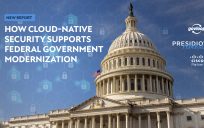Ohio Chief Information Officer (CIO) Ervan Rodgers is optimistic about his state’s future. Gazing into the proverbial crystal ball, Rodgers imagines Ohio’s technology and workforces reaching new heights in 2020 and beyond.
According to Rodgers, Gov. Mike DeWine’s administration is seeking a more innovative Ohio where agencies imitate the private sector’s best practices. Once this vision is realized, state agencies will serve its citizens with more flexibility and simplicity.
GovLoop spoke with Rodgers about how Ohio is trying to better serve its residents by streamlining public services. In the following Q&A, Rodgers also projected where important subjects such as cybersecurity, cloud computing and geographic information system (GIS) technology are heading.
This interview was lightly edited for length and clarity.
GOVLOOP: How do you see Ohio’s workforces and the CX they deliver changing in the years ahead?
Rodgers: For the most part, we have a great opportunity ahead of us. I’m so excited. The DeWine administration has made this a top priority. I was one of their first appointees. That’s how much technology is at the center of what we can do from an innovations standpoint. That’s what we’re focused on – delivering services to citizens. That’s at the heart of what we’re trying to accomplish. Having that type of support from the top of the house, I can’t echo how important that is. It helps me to unite and rally all the troops around the state from an IT standpoint. They see it as a partnership versus being against one another. It’s very much a complementary approach.
One thing the governor has said in the past is, ‘We’re here to do as much good as we can while we can.’ I’ve just embraced that. In fact, every six weeks I bring together all the CIOs of the various boards, agencies and commissions. That’s where a lot of the collaboration is taking place and we’re germinating ideas across these agencies that can then be shared. That means we’re quicker to market and have quicker turnaround times. We’re seeing some creative things. We see an opportunity to be more like the private sector within the government walls. We want to be that Midwest state that West Coast companies seek out to come and innovate in.
What cybersecurity threats are you dealing with, and how do you see them evolving going forward?
The top three things right now are ransomware, social engineering and phishing. We continue to see those attempts daily, especially at the local levels, where their investment from a cybersecurity perspective may not be as great. (Editor’s note: Phishing is a fraudulent attempt to get sensitive information by disguising oneself as a trusted source in electronic communication; social engineering involves psychologically manipulating people into performing actions or revealing sensitive information.)
I think that these attacks will continue to become more sophisticated. The bad guys are getting smarter. These trends will continue because they’re profitable from their standpoint. We must be very diligent, whether it’s an agency, city or county.
We’re reaching out and extending the olive branch across all of Ohio. We’re looking at this from an entire state standpoint and a collaborative standpoint. The stronger we are collaboratively together, the stronger our posture can be from a security standpoint.
How do you think Ohio will leverage GIS tools going forward?
We have a statewide board called the Ohio Geographically Referenced Information Program, or OGRIP. We’re providing some of the backbone capabilities that counties are taking advantage of statewide. I really think that this is going to be an area that continues to evolve.
My daughter happens to be a GIS graduate, so, as her dad, I try and pay attention to the trends in this space. It’s been helpful for me. For the 2020 Census, there are all sorts of possibilities that can be leveraged in this space by leveraging this technology. With the date fast approaching, every state wants to make sure that they’re taking full advantage and making sure that every person gets counted.
There’s a different approach to the next census. It’s along the lines of, ‘Yes, you’ll still get a letter in the mail, but it’s going to be an invitation to go online.’ That’s a different approach than what we’ve done in the past. We need to make sure that we’re leveraging all state assets, especially from a GIS perspective, that can greatly help us to look at our data.
This article is an excerpt from GovLoop’s recent guide, “How State & Local Gov Tech Will Look in 2020 & Beyond.” Download the full guide here.





Great interview! I’m hopeful about their better utilization of GIS positively affecting census response rates.